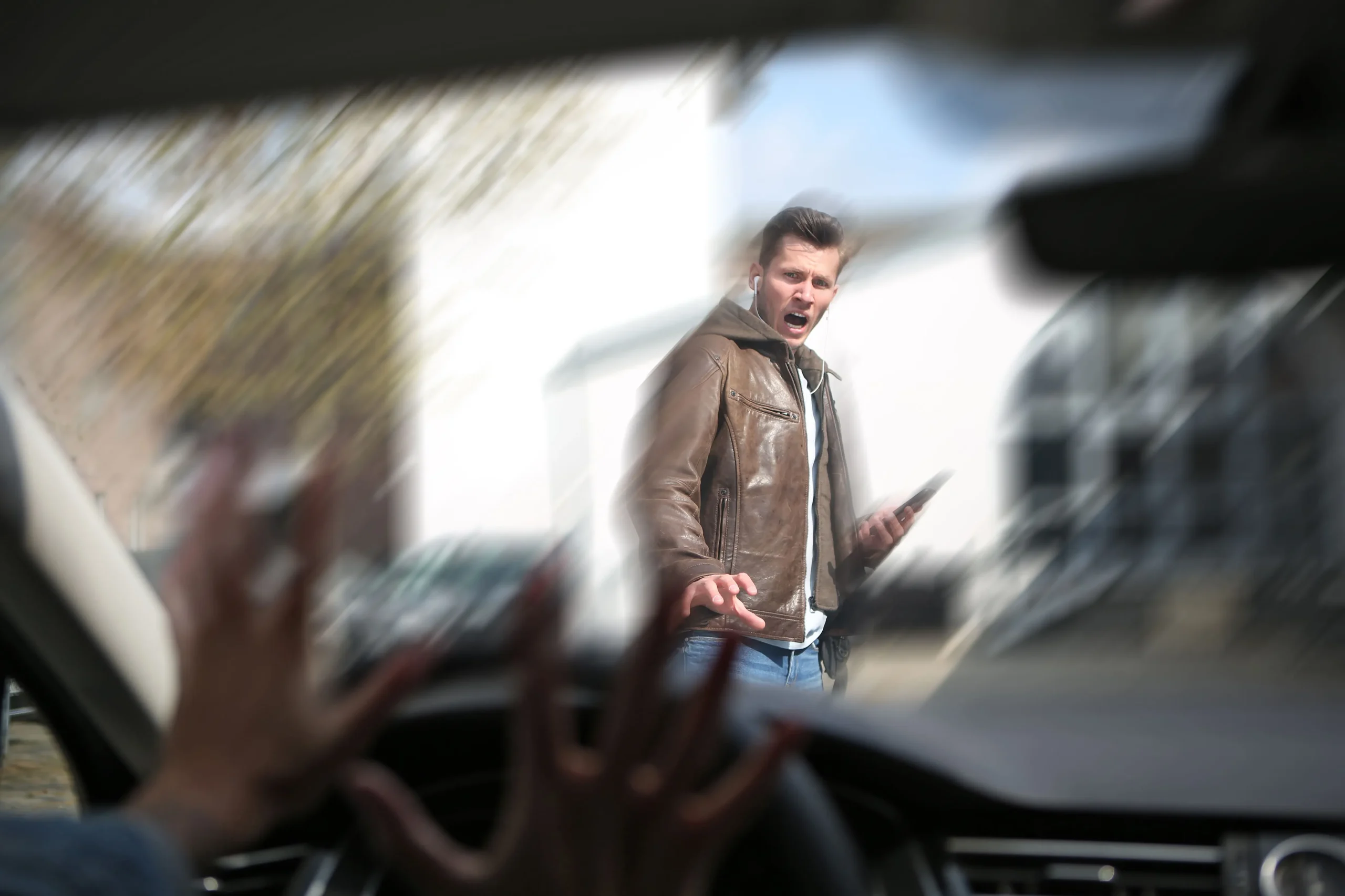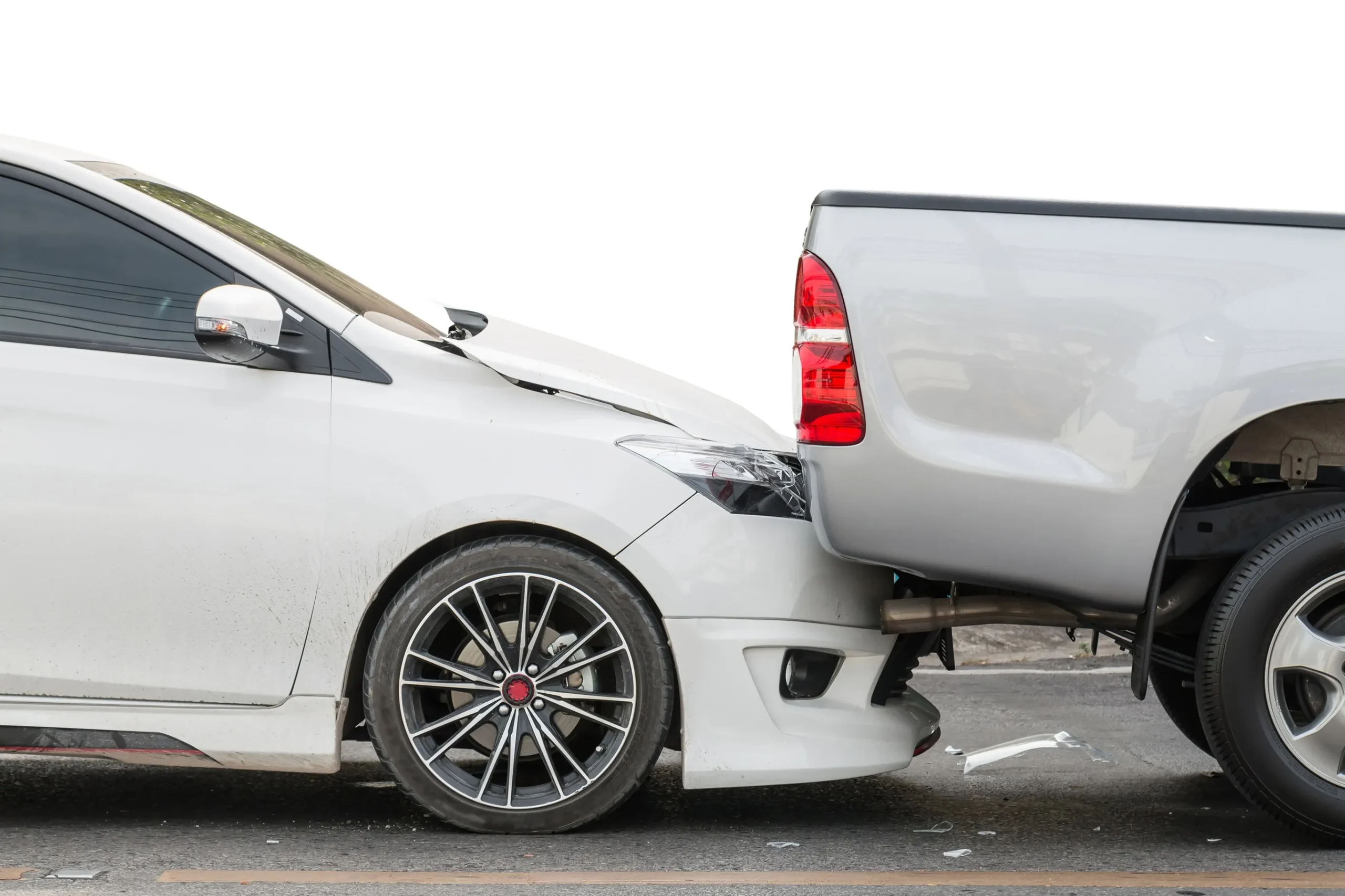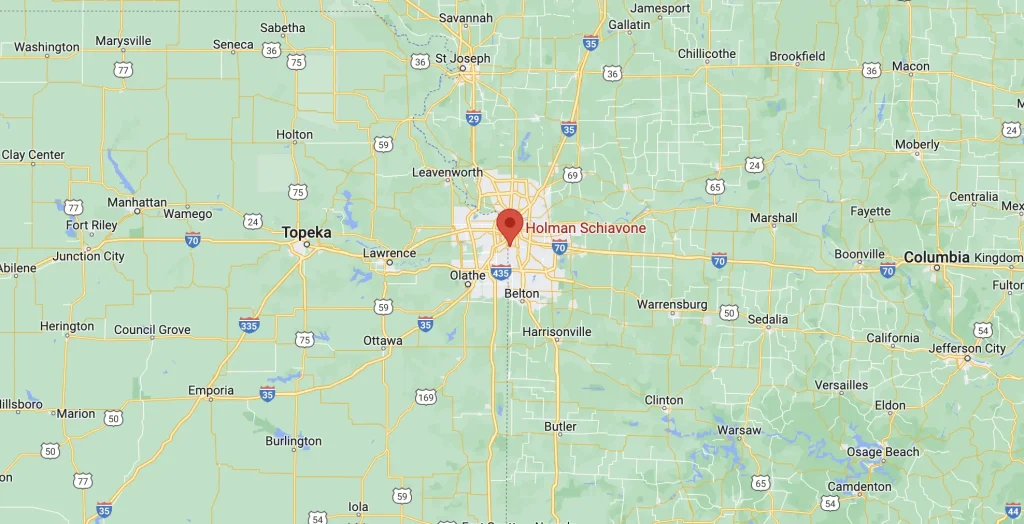 If you’ve been injured by someone engaged in distracted driving, you have the right to seek compensation, and the first step towards asserting your rights and getting to a full recovery is to talk with a car accident attorney. Read on for what you need to know about distracted driving.
If you’ve been injured by someone engaged in distracted driving, you have the right to seek compensation, and the first step towards asserting your rights and getting to a full recovery is to talk with a car accident attorney. Read on for what you need to know about distracted driving.
Types of Distracted Driving
Broadly defined, distracted driving involves any activity that diverts attention from driving, endangering both driver and passenger safety. This inattention could encompass a range of distractions, including phone use while driving, consuming food or drink, talking to people in the vehicle, or fiddling with the stereo, entertainment, or navigation system. If an accident results from such distractions, victims should seek advice from a Kansas City distracted driving accident attorney.
Driving distractions can be categorized into three primary types: manual, visual, and cognitive distractions. Manual distractions occur when drivers take their hands off the wheel, such as when reaching for a cell phone.
On the other hand, visual distractions refer to instances where drivers take their eyes off the road—perhaps to look at a text message or an incident happening on the roadside.
Lastly, cognitive distractions happen when drivers’ minds are not focused on driving. An example might be a driver lost in thought or engrossed in a phone conversation. When these distractions lead to accidents, it’s crucial to have a knowledgeable Kansas City distracted driving accident attorney to navigate the legal complexities and help you hold the distracted driver accountable.
Common Distractions Related to Cell Phones or Texting
Cell phone use has significantly contributed to the increase in distracted driving and related motor vehicle crashes. Statistics from the National Highway Traffic Safety Administration indicate that cell phone usage is linked to an array of driver distractions such as texting, browsing the internet, checking social media, and watching videos.
Texting while driving is particularly dangerous because it involves manual, visual, and cognitive distractions simultaneously. A texting driver will be less attentive to the road in every way, potentially leading to fatal accidents. Moreover, research shows that sending or reading a text message takes the driver’s eyes off the road for about 5 seconds. At 55 mph, this is equivalent to driving the length of an entire football field without looking.
Distracted Driving Statistics Over Time
 Distracted driving has escalated over the years, especially with the increasing ubiquity of smartphones and other in-car technologies. The National Highway Traffic Safety Administration (NHTSA) and the National Safety Council have provided some alarming distracted driving statistics. In 2020, 3,142 people died in distraction-affected crashes: an increase from 3,119 deaths in 2019. This upward trend signals the urgent need for both public awareness campaigns and legislative efforts to combat distracted driving. Consulting with a Kansas City distracted driving accident lawyer is a crucial step in understanding your rights and seeking compensation for losses in an environment where this type of behavior is becoming more common every year.
Distracted driving has escalated over the years, especially with the increasing ubiquity of smartphones and other in-car technologies. The National Highway Traffic Safety Administration (NHTSA) and the National Safety Council have provided some alarming distracted driving statistics. In 2020, 3,142 people died in distraction-affected crashes: an increase from 3,119 deaths in 2019. This upward trend signals the urgent need for both public awareness campaigns and legislative efforts to combat distracted driving. Consulting with a Kansas City distracted driving accident lawyer is a crucial step in understanding your rights and seeking compensation for losses in an environment where this type of behavior is becoming more common every year.
Times of Day When Distracted Driving Is Most Common
Distracted driving occurs at all times of the day. However, according to traffic safety facts provided by the NHTSA, it tends to peak during rush hours, when many drivers may be either heading to work or returning home. Getting stuck for long periods of time at red lights and traffic jams during these times can tempt bored drivers to engage in other tasks, such as making phone calls or sending texts. The peak hours for distracted driving, and thus for distracted driving-related crashes, are from 6pm to 11pm during weekdays, when distracted drivers are most often succumbing to a combination of fatigue, boredom, and anxiety to get home.
Conversely, the least likely time to be involved in motor vehicle accidents that involve distracted driving is from 6am until 9am, when people are less likely to be on their cell phones.
Distracted Driving Statistics by Drivers Ages
Distracted driving affects all age groups, but certain drivers are most at risk. The National Highway Traffic Safety Administration reports that, in 2020, drivers between the ages of 24 and 34 had the highest proportion of fatal crashes due to driver distraction. Moreover, a significant number of young teen drivers seem to underestimate the risks associated with distracted driving and overestimate their ability to use technology without suffering impaired driving.
Other Driver Distraction Statistics
People Aren’t Using a Hands-Free Device
 Although many newer models of vehicles now feature hands-free technology, a worrying percentage of drivers are yet to embrace these advancements and continue to use their electronic devices directly. Astonishingly, statistics indicate that about 2.5% of drivers on U.S. roads continue the risky behavior of holding their cell phones to their ears while operating their vehicles. In terms of raw numbers, this implies that close to 373,066 individuals are driving with their phones held to their ears at any given moment.
Although many newer models of vehicles now feature hands-free technology, a worrying percentage of drivers are yet to embrace these advancements and continue to use their electronic devices directly. Astonishingly, statistics indicate that about 2.5% of drivers on U.S. roads continue the risky behavior of holding their cell phones to their ears while operating their vehicles. In terms of raw numbers, this implies that close to 373,066 individuals are driving with their phones held to their ears at any given moment.
Disturbingly, young drivers aged between 16 and 24 –also the most inexperienced drivers on the road – are the most frequent culprits here. In 2021, 3.7% of drivers within this age bracket were caught with their phones to their ears while driving. This figure was higher than the 2.5% recorded for those aged 25 to 69, and substantially more than the 0.7% cell phone use statistic among motorists aged 70 and above. Encouragingly, however, there has been a decline in phone use across all age groups since 2012.
For individuals in Kansas City who have fallen victim to accidents caused by distracted drivers, it’s imperative to pursue your legal rights and potential remedies. Experienced lawyers can provide invaluable assistance in such situations. They can guide victims through the complex legal landscape, help establish liability, and seek compensation for medical bills, lost wages, pain and suffering, and other related damages. Legal representation can also serve as a means of holding negligent drivers accountable, highlighting the dangers of distracted driving and acting as a deterrent to this kind of dangerous behavior.
Distracted Driving and Touchscreens
Another form of distraction has surfaced in the form of touchscreen use in vehicles. With the advent of infotainment systems and in-car screens, the percentage of drivers using devices while driving jumped from 1.5% in 2012 to 3.4% in 2021, and distracted driving laws have not developed to account for the rise in touchscreens and the way they keep drivers from paying attention.
Bad Weather Doesn’t Prevent Distracted Driving
Some drivers show no hesitation to use their cell phones even under adverse weather conditions. Intriguingly, unclear weather conditions seem to encourage phone use while driving, with 3% of drivers admitting to phone use during such conditions, compared to 2.4% in clear weather.
Drivers who are texting and driving in bad weather are trying to alert family and friends to changes in plans or other weather-related issues.
The Human Toll: Fatalities and Injuries from Distracted Drivers
Annually, it’s estimated that nearly 3,000 individuals meet a tragic end as a result of distracted driving-related car accidents. This statistic represents approximately 8% to 9% of all fatal motor vehicle crashes that occur throughout the United States.
In 2020, a total of 3,142 fatalities were reported as a result of collisions involving distracted driving. Among these, 396 deaths were linked to crashes where cell phone use was identified as the cause. Despite the death toll of 3,142 lives in 2020 due to distracted driving, though, it’s crucial to note that this does not translate to an equal number of collisions. In fact, a total of 2,880 fatal accidents were reported to have resulted from driver distraction in the same year.
Why the Discrepancy?
The discrepancy between the number of fatalities and the number of crashes underscores the grim reality that a single collision can lead to multiple deaths. Since 2016, distracted driving has been responsible for between 8% to 9% of all fatal crashes. Although this percentage is significantly lower than the 30% attributed to driving under the influence, distracted driving fatalities are nevertheless far greater than they should be. Inattentive drivers need to take the situation more seriously, as should the law.
Distracted driving results in a steady loss of lives throughout the year. On average, nine individuals lose their lives every single day in the United States due to this alarming issue. This is where the expertise of lawyers can make a critical difference going forward. A Kansas City distracted driving accident attorney can serve as both an advocate for victims and a deterrent to negligent drivers. By seeking justice for victims, these attorneys highlight the gravity of distracted driving, hold guilty parties accountable, and push for stricter penalties and laws.
The involvement of lawyers sends a potent message: that distracted driving is not a trivial offense and will have severe legal repercussions. By publicly winning cases and securing substantial compensation, you and your attorney warn potential distracted drivers by emphasizing the financial, legal, and moral consequences of their actions. These warnings are essential for shifting the societal mindset, establishing accountability, and ultimately decreasing the number of tragic accidents on the road.
Questions and Answers for Those Injured in Traffic Crashes Due to Distracted Driving
What Are Missouri Distracted Driving Laws?
A new law that targets distracted driving is due to take effect in Missouri on August 28, 2023. The law prohibits holding a phone while driving and will be punishable with a warning initially and a $150 fine starting from 2025. The legislation, known as the Bening Bill, was named after Stephany Bening, whose husband was killed in a distracted driving incident.
The bill permits hands-free devices but bans holding a phone for any reason. Car accidents due to distraction from a driver electronic device could lead to serious charges, including possible felony charges. Exceptions apply to emergency services, law enforcement, and ride-share drivers, and drivers are allowed to use hand-held cell phones while at a complete stop.
Do I Need Legal Counsel in a Distracted Driving Personal Injury Case?
Having a lawyer is crucial when dealing with a distracted driving case. A lawyer can help gather evidence of the other driver’s distraction, such as cell phone records or witness statements. They can negotiate with insurance companies on your behalf, ensure that all paperwork is filed correctly, and represent you in court if necessary. A personal injury lawyer’s knowledge and experience can greatly improve the likelihood of receiving fair compensation for medical bills, lost wages, and other damages following a distracted driving accident.
While the legal process can seem daunting, remember you don’t have to face it alone.
What Evidence Do I Need for a Distracted Driving Case?
To build a strong case for compensation after being injured by a distracted driver, one must gather as much evidence as possible to prove that the other driver was indeed distracted. Law enforcement reports are essential in this context. The police report should ideally state the contributing factors leading to the accident, including if the other driver was using a cell phone or was otherwise distracted.
Witness accounts can also be incredibly valuable. Bystanders, other drivers, or passengers may have seen the distracted driver engaging in phone use or other tasks just before the accident. They can provide statements that support your claim.
In some instances, it may be possible to subpoena cell phone records, which can prove if the driver was sending a text or on a call at the time of the crash. A lawyer can guide you through this process.
How Are Damages Calculated in Distracted Driving Cases?
After an accident, it’s crucial to document all the costs associated with your injuries. These may include medical bills, rehabilitation costs, lost wages, and any future expenses related to your injury, such as ongoing physical therapy or future surgeries. Pain and suffering, and loss of enjoyment of life, may also be included in your claim.
Remember to keep all your medical records and receipts. They will be essential when calculating the total damages you’re claiming.
Are Punitive Damages Ever Awarded in Distracted Driving Personal Injury Cases?
While most damages in personal injury cases are compensatory, meaning they aim to compensate the injured party for their loss or harm, punitive damages are not tied to the injury. Instead, they are related to the behavior of the defendant. If a defendant acted with gross negligence or intentional misconduct, a court might award punitive damages to make a strong statement against such behavior.
Punitive damages are not awarded in all, or even in most cases, but rather only in cases where the conduct of the defendant is found to be especially harmful or reckless. In certain cases, punitive damages may be awarded in addition to compensatory damages after a distracted driving accident, though you should always discuss this with your lawyer.
In Missouri, punitive damages might be awarded if your lawyer is able to prove convincingly that the other driver’s behavior rose to the level demanded in the law, which requires proving the “defendant intentionally harmed the plaintiff without just cause or acted with a deliberate and flagrant disregard for the safety of others.”
How Do I File a Claim With an Insurance Company for a Distracted Driving Accident?
Once you have gathered all the necessary evidence and calculated your damages, the next step is to file a claim. The claim should include all the evidence you’ve gathered, along with a demand for compensation.
Insurance companies can sometimes be difficult to work with, and they may try to minimize the amount of compensation they pay out. Therefore, having a lawyer by your side during this process can be extremely helpful.
The Role of a Lawyer in Your Distracted Driving Case at Trial
If negotiations with the insurance company fail or are not satisfactory, you may need to file a lawsuit. Your lawyer can help you with this process, too. They will draft the necessary court documents, represent you in court, and negotiate any potential settlement offers.
In the event the case goes to trial, your lawyer will present the evidence, cross-examine witnesses, and make arguments on your behalf. The goal is to convince the judge or jury of the other driver’s fault and the extent of your damages. Thus, having a competent lawyer can greatly increase the chances of a favorable outcome in your case.
Preventing Texting and Distracted Driving Accidents
Despite the risks, many drivers continue to use their phones behind the wheel. A simple solution is to turn off your cell phone or put it on silent mode while driving. If a call or text can’t wait, pull over safely before using your phone.
Parents can also play a role in preventing distracted driving. By setting a good example and discussing the dangers of distracted driving with their teenagers, they can help instill safe driving habits. Further, technology can assist in reducing distracted driving; numerous apps can prevent incoming messages or calls while driving.
Distracted driving is a pervasive problem, contributing to thousands of fatalities and severe injuries each year. The aftermath of these accidents often leaves victims with significant losses and complex legal battles. Fortunately, legal assistance is available. Holman Schiavone, LLC, stands ready to help those injured by distracted drivers pursue their rightful compensation.
If you or a loved one has been a victim of a distracted driving accident, reach out to Holman Schiavone, LLC at 816-330-2253 for a free consultation.


